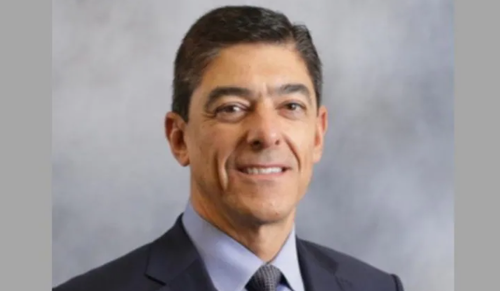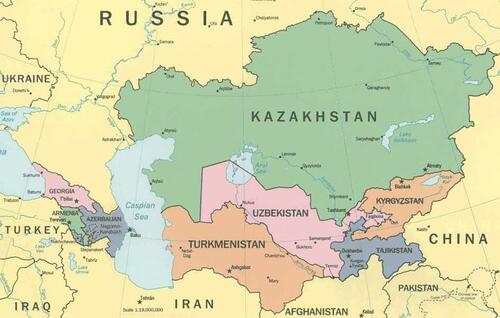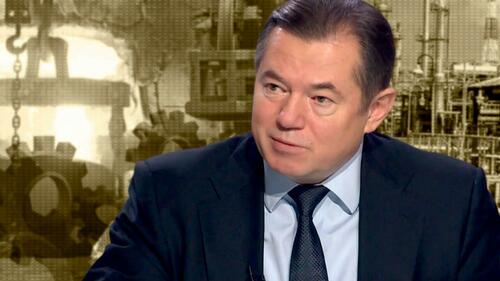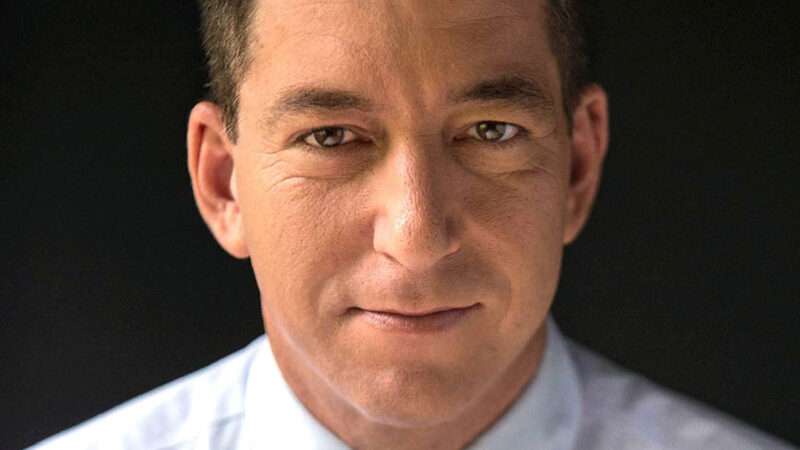Here’s a tip: If you have some radical political views and an acquaintance reaches out, encourages you to act on your convictions, and maybe offers to introduce you to a guy who can sell you some bomb parts, don’t take him up on it. That guy’s almost definitely working for the feds.
For the past two decades, the FBI and federal prosecutors have brought case after case against would-be radicals who were ratted out by informants. They have been enormously successful in obtaining convictions in these cases, despite persistent criticisms that the FBI uses unscrupulous informants, conjures up the very plots it disrupts, and entraps defendants who have little to no ability to actually carry out a terror attack.
It looked like the case against the Michigan militia members who allegedly plotted to kidnap Democratic Gov. Gretchen Whitmer in October 2020 was going to be another data point in that trend: an extremist group riddled with FBI informants set up to take the fall for all their big talk. An unusual thing happened, though. The jury didn’t buy it. When the verdicts were read a year and a half later in March, two of the militia members were acquitted, and the jury deadlocked on the other two.
In June, a federal judge ordered the two remaining defendants to stand again for a retrial, but the collapse of the prosecution of the Whitmer defendants is one of the biggest public embarrassments for the FBI’s counterterrorism and informant programs since 9/11. The Whitmer case is more than just a high-profile embarrassment. It’s a window into the FBI’s decadeslong strategy, born of powers granted to fight the war on terror, of pursuing criminal investigations against hypothetical criminal acts that may never be committed based on evidence that amounts to little more than fringe political or ideological speech.
The FBI has typically portrayed these investigations as efforts to thwart domestic terror, but all too often, the result has been to encourage or invent plots that were unlikely to succeed. In the Whitmer case and others, the feds weren’t stopping terror: They were helping bumbling defendants plan and enact it.
Michael German, a former FBI special agent and currently a fellow with the Brennan Center for Justice who worked undercover in the 1990s infiltrating white nationalist organizations and eventually resigned after filing whistleblower complaints, argues the change has been detrimental to the bureau’s mission. “The targeting is based on what people say and think and who they associate with rather than evidence of criminality,” he says. “It alters the focus of the investigation away from the individuals who are involved in criminal activity.”
‘A Plot To Kidnap a Sitting Governor’
The video is a mere 26 seconds long. In it, two men with long guns dressed in tactical gear pile out of a bright blue Chrysler PT Cruiser—yes, a PT Cruiser, a car more strongly associated with youth pastors than terrorists. The men shoulder their rifles and begin firing downrange at unseen targets. “Keep moving,” the man filming from the back seat urges them. The footage, released by the U.S. Attorney’s Office for the Western District of Michigan on October 16, 2020, along with a tranche of other records, was one of America’s first looks at the would-be abductors of Whitmer.
A week earlier, the FBI and Michigan state officials announced the arrest of 13 men, half of them members of a militia group called the Wolverine Watchmen (presumably because one of Michigan’s nicknames is the Wolverine State).
Six of the men—Barry Croft, Ty Garbin, Daniel Harris, Adam Fox, Brandon Caserta, and Kaleb Franks—were indicted by a federal grand jury for conspiracy to commit kidnapping. Eight others were eventually charged with providing material support to terrorism for aiding their plot.
“These alleged extremists undertook a plot to kidnap a sitting governor,” FBI Assistant Special Agent in Charge Josh P. Hauxhurst said in a statement. “Whenever extremists move into the realm of actually planning violent acts, the FBI Joint Terrorism Task Force stands ready to identify, disrupt and dismantle their operations, preventing them from following through on those plans.”
The group cased Whitmer’s summer cottage twice. They wanted to blow up a bridge near her home to slow down the police response. They built a mock structure to practice raids and were sourcing and testing bomb-making materials, prosecutors said in charging documents.
The arrests, announced a month before the 2020 election, played to fears about right-wing radicalization. “We wanted to cause as much a disruption as possible to prevent Joe Biden from getting into office,” Garbin would later testify. Both Whitmer and then-presidential candidate Joe Biden blamed President Donald Trump for fomenting extremism.
Ideologically, the defendants fit into the loose “boogaloo” movement—pro–Second Amendment, anti-government, somewhat apocalyptic and nihilistic. “When the time comes there will be no need to try and strike fear through presence,” Caserta texted in one conversation. “The fear will be manifested through bullets.”
Text messages between the plotters show they were enraged by Michigan’s COVID-19 lockdowns. “When’s the lynching?” Fox texted the group when the Michigan Supreme Court struck down Whitmer’s sweeping emergency orders in October 2020. “She should be arrested now, immediately. Who wants to roll out?”
They considered holding a show trial for the “tyrant” governor for treason after they kidnapped her. (“Treason is a hanging offense,” Croft said in one recording.) Why stand on ceremony, though? Harris floated the idea of dressing up like a pizza delivery man and killing her when she opened the door.
“Just dome her. Shoot her in the head,” Harris suggested at one point.
Two of the defendants, Garbin and Franks, pleaded guilty to the conspiracy charges and agreed to testify against the others at trial, a choice they may now very much regret. Garbin was sentenced to 75 months in prison. Franks is still awaiting sentencing.
‘Don’t Let the Facts Get in the Way of a Good Story’
After the initial media frenzy died down following the arrests, the actual details of the plot against Whitmer began to trickle out. The would-be abductors were as often inept as they were sinister.
BuzzFeed News revealed in a series of investigative stories that the FBI used no less than a dozen confidential informants and two undercover agents to gather intel on the group. “Working in secret, they did more than just passively observe and report on the actions of the suspects,” the story noted. “Instead, they had a hand in nearly every aspect of the alleged plot, starting with its inception.”
When the group took a nighttime road trip to surveil Whitmer’s summer house, there were two informants and two undercover agents in the cars with them and multiple agents surveilling them, including an agent on Whitmer’s boat dock.
The second-in-command of the Watchmen, Iraq war veteran Daniel “Big Dan” Chappel, started wearing a wire after militia members began casually talking about killing police officers.
Chappel said he joined the militia because he wanted to keep his military skills sharp, not become a guerrilla cop-killer. (This did not endear him to the others. “He’s a bitch,” Harris would later testify at trial about Big Dan, complaining that he was scared of memes the group shared.)
Fox, the alleged mastermind of the conspiracy to kidnap Whitmer, lived in the basement of a Grand Rapids, Michigan, vacuum shop. The other plotters called him “Captain Autism,” and one said in court that his shooting skills “weren’t top-notch.”
There were problems with who was watching the Watchmen. One of the lead FBI agents working the case was charged in state court with assault for allegedly beating his wife after returning home from a swingers party at a hotel. He was subsequently fired from the FBI.
Another of the confidential informants was indicted on gun charges, and a local prosecutor was removed from the case while under investigation for actions in an unrelated case. The individual who raised the possibility of blowing up a bridge turned out to be an undercover FBI agent. Between the credibility issues and the unavoidable partisan tinge that had tainted the case, the FBI lost control of the narrative.
By the time the remaining four defendants stood trial in federal court on March 8, 2022, their defense lawyers had a workable, if unenviable, position to fight from. The voluminous amount of audiotapes and text messages collected by the FBI also contained the Watchmen arguing and disagreeing with the idea of kidnapping Whitmer, and they included one particularly helpful line from an FBI agent. “We have a saying in my office,” the agent said in a December 10, 2020, conversation with one of the informants. “Don’t let the facts get in the way of a good story.”
In another instance, an FBI handler texted Big Dan: “Mission is to kill the governor specifically.”
This was the crux of the defense’s argument, that the FBI and their informants ginned up a conspiracy that never really existed beyond vague bull sessions and which the individual members of the group never agreed to carry out.
The violent fantasies were just “rough talk” from some guys who were stoned and drunk more often than not, defense lawyers said. They had no respect for Fox, the supposed leader, and they were too baked to even come up with a coherent plan. One iteration involved using stolen Black Hawk helicopters. Another required no less than three teams and several boats, possibly with the intention of leaving Whitmer adrift on Lake Michigan.
They did not have boats, much less air cavalry.
“There was no plan to kidnap the governor, and there was no agreement between these four men,” Joshua Blanchard, Croft’s lawyer, insisted in his closing arguments.
Still, federal prosecutors had an enormous advantage in the trial. They managed to exclude the full context of the defendants’ most inflammatory comments from being entered into evidence, and the judge barred the defense from inquiring about misconduct by the FBI agents and their informants. The defense attorneys could only tell the jury that prosecutors weren’t giving them the full picture.
In one sense, though, this was a gift to the defense. Without the full context or additional testimony, jurors and the public would be left to fill in the blanks with what they did know, or what they suspected, about how the FBI runs anti-terrorism stings.
‘You Actually Had To Have Articulable Facts’
The sort of informant-led investigation that resulted in the arrests of the Wolverine Watchmen is largely due to the rollback of Watergate-era restrictions on the FBI following 9/11. The Whitmer case wasn’t just a poorly conceived investigation; it was the direct result of a strategic internal policy change that allowed the FBI to begin targeting people who had done nothing illegal in order to prosecute the war on terror.
In 2002, Attorney General John Ashcroft amended the attorney general guidelines to expand the investigative techniques the FBI could use during preliminary inquiries.
In 2008, Attorney General Michael Mukasey again broadened the FBI’s power to investigate people absent any evidence that they were involved in a crime, something that would have been illegal prior to 9/11. The new guidelines also specifically allowed the FBI to consider religious affiliation and ethnicity when selecting targets, although those couldn’t be the sole criteria to justify threat assessments. The FBI argued that its manual forbade racial profiling, but if you were looking for young men with ties to the Somali extremist group al-Shabab, for example, Somali immigrant communities would be the natural place to start.
This made way for a substantial shift in agency strategy and tactics, argues Michael German, the former undercover agent. “You actually had to have articulable facts that provided a reasonable indication of criminal activity,” German says of the pre-9/11 FBI.
The new rules reflected the national security apparatus’ biggest fear: not organized terrorist cells embedded in the U.S. but individuals radicalized and recruited through the internet or other propaganda, the so-called lone wolves.
The concern was that one properly motivated lone wolf could kill hundreds, even thousands of people without the support of traditional terror networks.
Thus, the U.S. government embraced what became known as preemptive prosecutions: identifying, ensnaring, and convicting wannabe jihadists before they could carry out an attack for real.
German says the loosening of its rules and the FBI’s embrace of this radicalization theory moved the bureau away from investigating actual crimes, particularly regarding white nationalists and neo-Nazis.
“We see these types of complex sting operations, and yet the FBI…can’t tell you how many people white supremacists killed last year, because they don’t even track these crimes,” he says. Investigations proceed based on statements and associations, often of a fringe political nature, rather than evidence of crimes.
The other problem is the men who fit the profile and get onto the FBI’s radar are often, to put it indelicately, losers: unemployed or marginally employed, sometimes still living with their parents. They have cartoonishly grand and violent ambitions but limited means to carry them out.
In the Whitmer case, for example, the defense argued that some of the alleged conspirators “lived in a dream world where they fantasized about being real-life combat operators.” In this telling, the plots were essentially elaborate role-playing exercises.
‘More Aspirational Than Operational’
One of the first examples of this preemptive prosecution strategy was the case of the Liberty City Seven, a group of men in Miami led by Narseal Batiste, who belonged to an offshoot of an obscure, syncretic black religious movement.
After an enterprising informant tipped off the FBI that a group of black radicals was hanging out in a Miami warehouse, the bureau put the informant on the group and lured Batiste into believing that he was in contact with a terrorist financier. The fake financier promised Batiste $50,000 in exchange for pledging a loyalty oath to Al Qaeda and surveilling some FBI field offices in Miami, which Batiste agreed to. The conversations between Batiste and the informant heavily suggested that Batiste was more interested in the money than carrying out jihad, and he wasn’t above spinning some yarns to get it. (Batiste told the informant that he believed he could bomb Chicago’s Willis Tower so that it would fall into Lake Michigan and generate a tsunami, creating additional devastation. The 1,450-foot skyscraper is about a mile from the lake.)
In a June 2006 press conference announcing the indictment of the Liberty City Seven defendants, an FBI deputy director admitted that the group’s plot to unleash a wave of bombings and chaos in Miami and Chicago “was more aspirational than operational,” but the U.S. government was determined not to get caught flat-footed by another terror attack, and that meant snuffing them out before they ever got past aspirations. If this meant believing that Batiste and the six men he hung out with in the warehouse of his insolvent construction company were going to blow up the Sears Tower unless they were stopped, so be it.
“The government need not wait until buildings come down or people get shot to prove people are terrorists,” federal prosecutor Jacqueline Arango said in her closing arguments in the Liberty City Seven case.
The Liberty City Seven case was a mess. It took three trials to convict five of the seven defendants. But it was still proof of concept for the government’s new strategy of using informant-led stings and preemptive prosecutions to root out radicals with violent leanings. The two informants who made the case possible were paid $40,000 and $80,000 for their work.
All the FBI needed to bring more cases like that were more informants.
‘Worse Than a Mass Murderer’
The FBI has, of course, always relied on informants. But even during J. Edgar Hoover’s paranoid reign, they were mostly limited to being eyes and ears.
This started to change in the 1980s as federal law enforcement got more involved in the drug war. The FBI began to allow informants to take a more active role in setting up stings. The bureau sometimes wasn’t particular about who it used, either. Take the case of Richard Wershe Jr., more famously known as “White Boy Rick.”
Wershe became a Detroit street legend after he was busted in 1987 with eight kilos of cocaine, the largest single-defendant seizure in the city’s history at that point. He was 17 years old, a mid-level player in the city’s drug trade, and showed up to court in an Armani suit. A judge sentenced him to life in prison without parole, saying he was “worse than a mass murderer.”
Wershe claimed for decades that the FBI and Detroit police had recruited him as a paid confidential informant at the tender age of 14 to assist their investigations of the city’s crack cocaine trade before eventually turning on him. The story seemed like an eye-roller, but in 2015 The Atavist Magazine tracked down old FBI records and a retired agent who confirmed the feds had used the industrious, baby-faced teen to keep tabs on some of Detroit’s most violent drug crews. When Wershe was 15, the FBI even paid for a flight to Las Vegas and a fake ID so he could go to a boxing match at Caesars Palace attended by some of Detroit’s cocaine wholesalers.
“He was a 14-year-old put into the system to provide information,” Robert Aguirre, a former member of the Michigan State Parole Board, told me in 2014. “The expectation was what? That he would choose to achieve things in high school and go on to higher education?”
After 9/11, the FBI had to rapidly pivot to becoming a counterterrorism agency, and to do so it needed to build out an unprecedented informant network. Journalist Trevor Aaronson described how the FBI developed, used, and abused this historically large spy network in his 2013 book, The Terror Factory.
“What became clear from my reporting is that in the decade since 9/11, the FBI has built the largest network of spies ever to exist in the United States—with ten times as many informants on the streets today as there were during the infamous COINTELPRO operations under FBI director J. Edgar Hoover—with the majority of these spies focused on ferreting out terrorism in Muslim communities,” Aaronson wrote.
In 1975, the Church Committee investigating abuses by the intelligence community found the FBI had roughly 1,500 informants. By 2008, the FBI’s budget request included funds to build new software to track up to 15,000 informants.
Since Aaronson released his book, much of the FBI’s counterterrorism efforts have focused on Americans providing support or trying to join the Islamic State, but the tactics and targets remain the same. Since 2014, 208 people have been charged in the U.S. with offenses related to ISIS, according to the George Washington University Program on Extremism. Of those, 58 percent were arrested in an operation involving an informant and/or an undercover agent.
This sort of informant network doesn’t come cheap. The FBI paid approximately $294 million to informants between FY 2012 and FY 2018, according to OpenTheBooks.com.
When money isn’t enough, the FBI isn’t above intimidation and coercion to get a reliable snitch. The FBI has used levers like the threat of deportation, being put on the no-fly list, and sometimes straight-up blackmail to convince reluctant people, most often Muslims and foreigners staying in the U.S. on visas, to become informants.
“I don’t think anyone fully appreciates how demoralizing it is to be sitting across the table from a peace-loving man or woman from a foreign country, insinuating all kinds of baseless BS, attempting to coerce them to spy on their equally peaceful community,” Terry Albury, a disillusioned former FBI agent who was convicted of leaking classified documents, told The New York Times, “but it was also my job.”
All this isn’t to say the FBI never gets their man using a well-placed informant. An undercover FBI source in Florida infiltrated the Ku Klux Klan and exposed several prison guards who were credibly plotting to murder a black former inmate.
Karen Greenberg, director of the Center on National Security at Fordham University School of Law, has meticulously tracked terrorism-related prosecutions since 9/11 and watched the government refine its methods for building and winning cases against alleged terrorists. The trouble, she says, is when informants are “not just inserting themselves as eyes and ears but inserting themselves as provocateurs. The real question is can you have a policy like this and still rein it in from becoming the latter?”
‘The Only Reason They Got on the Radar Was Because They Had a Political Viewpoint’
One of the crucial points in the FBI’s defense of its counterterror efforts and informant program, and one hotly disputed by its critics, is that it waits until rhetoric goes beyond your average punk lyrics before it takes action.
For example, at a 2006 press conference announcing the indictment of 11 “eco-terrorists” responsible for an estimated $80 million in property damages, then–FBI Director Robert Mueller said, “The FBI becomes involved, as it did in this case, only when volatile talk crosses the line into violence and criminal activity.”
But some cases seem to contradict Mueller’s statements. Consider Eric McDavid, who was convicted along with two others in 2007 of plotting to bomb a dam in California.
In the early 2000s, the FBI took a keen interest in anarchists and radical environmentalists, which is how McDavid, 26 at the time, met a young woman named “Anna” at an anarchist gathering in Iowa in 2004. Anna was in fact a volunteer FBI informant who had a knack for infiltrating radical leftist spaces.
“The only reason they got on the radar was because they had a political viewpoint,” Mark Reichel, McDavid’s lawyer at his original trial, told me in 2015. “At the same time, the head of the Justice Department was testifying before Congress, saying, ‘No, we don’t do that. We don’t spy on people because of political reasons.'”
Indeed, in 2006, the American Civil Liberties Union received FBI records through Freedom of Information Act requests showing that agents had surveilled activists such as Quakers, anti-war Catholics, and an especially dangerous-sounding extremist group called “Raging Grannies.” Under sharp questioning from the Senate Judiciary Committee, Mueller denied that the groups’ speech had resulted in their being targeted. “We were attempting to identify an individual,” Mueller testified. “The agents were not concerned about the political dissent.” A 2010 Department of Justice Inspector General report later concluded that the FBI was sloppy and improper, though it did not find the investigations were launched in response to protected First Amendment activity.
Anna’s FBI handlers put her on McDavid and two of his friends full time in 2005 after Anna reported that McDavid had been further radicalized. Eventually, the bureau supplied Anna with a bugged 1996 Chevrolet Lumina and a cabin in the California foothills where the four could discuss potential targets to bomb: cellphone towers, fish hatcheries, a dam. When the group bought some bomb-making supplies at a Kmart, using a fake recipe supplied by Anna, law enforcement closed the trap and arrested them.
McDavid’s defense attorneys argued the group’s schemings were, like those of the Whitmer defendants, just stoned daydreams and braggadocio. Would McDavid and his friends have been able to do anything without Anna urging them on and providing them with a car, a cabin to stay in, fake bomb recipes, and spending cash in the form of crisp $100 bills?
But winning on an entrapment defense is extremely difficult, because it requires showing that the government induced the crime and that the defendant lacked the predisposition to engage in the crime.
The second element is what proves tricky for defendants trying to argue entrapment. In some cases, an undercover FBI agent drives the sting target to a vantage point and hands them a remote detonator to a fake bomb. It’s hard to argue you had no predisposition to commit an act of terrorism when, given the chance, you pushed a button believing that you were about to kill dozens, maybe hundreds of people. Although the defendants in the Whitmer case argued they never agreed to kidnap the governor, they all got in the car to stake out her house and inspect the bridge they had talked about bombing.
This is why the FBI has such a long track record of winning these sting cases. According to a report by the Reiss Center on Law and Security at New York University, of 593 terrorism-associated prosecutions between 2001 and 2009, the U.S. government secured convictions in 523 of them, an 88 percent conviction rate.
“The entrapment defense, whether it’s a formal or sort of informal entrapment defense, is very much something that does not work in terrorism trials,” Greenberg says. “If you say the FBI overreached, that the FBI suggested the plot, that the FBI helped pick the weapons, that the FBI was really the initiator in many steps of a plot, it doesn’t matter. Juries find for the government.”
The jury in McDavid’s case was no exception. He was sentenced to almost 20 years in federal prison on enhanced terrorism charges. (Notably, the jury was instructed to only consider McDavid’s predisposition for violence from 2005 onward, not when Anna first began reporting on him in 2004.)
McDavid got an unexpected reprieve seven years later, when two of his supporters filed a Freedom of Information Act request for his FBI file and received 2,500 pages of documents that prosecutors had previously insisted did not exist. The records included notes from McDavid to Anna showing that he was smitten with her and responses from Anna telling him to wait until after their “mission.”
The U.S. Attorney’s Office in Sacramento could offer no satisfactory explanation for why the records were never turned over to McDavid’s defense counsel. An exasperated federal judge called the debacle “one of the most unusual things I’ve had to deal with, if not the most unusual,” in his nearly 20 years on the bench.
Federal prosecutors cut a deal with McDavid to release him on time served in exchange for pleading to a lesser charge of conspiracy, and he walked free in 2015 after nearly nine years in federal prison.
“Anna” had long ago given up the spy game and moved on with her life, her service to her country complete.
‘There Are a Lot of People Who Are Understandably Very Concerned About Mr. Epps’
“Exactly how many of those present at the Capitol complex on January 6 were FBI confidential informants, agents, or otherwise, working directly or indirectly with an agency of the United States government?” Donald Trump asked at a January 15 rally in Arizona. “People want to hear this. How about the one guy, ‘Go in, go in, get in there, everybody,’ Epps. ‘Get in there, go, go, go.’ Nothing happens to him. What happened with him? Nothing happens.”
The former president was engaging in one of the more popular hobbies for MAGA conservatives over the past two years: “just asking questions” about the FBI’s involvement in the January 6 riot at the U.S. Capitol.
Trump was specifically referencing Ray Epps, an Arizona Trump supporter accused of being an FBI instigator based on several videos of him urging other Trump supporters to go into the Capitol and the fact that a photo of Epps on the FBI’s website had disappeared. The accusation was echoed by a coterie including House and Senate Republicans and right-wing media.
“There are a lot of people who are understandably very concerned about Mr. Epps,” Sen. Ted Cruz (R–Texas) said during a January Senate hearing, pressing FBI Executive Assistant Director Jill Sanborn to disclose whether Epps was a fed.
Epps, through his lawyer and in testimony before the House committee investigating January 6, has denied all of this. The FBI, as a matter of course, refuses to confirm or deny the particulars of its informant program, which just fuels more speculation. No real evidence has emerged of Epps’ ties to the FBI. In late March, the Justice Department said it was preparing a “disclosure” to provide to attorneys of several January 6 defendants who have demanded details on Epps. According to the disclosure, a man who was at the Capitol riot told FBI investigators that Epps had actually encouraged him to calm down, saying, “Relax, the cops are doing their job.”
The FBI frequently reveals the use of informants in charging documents and other court records. But no court records in the hundreds of prosecutions of January 6 rioters have mentioned the use of agents provocateurs. It’s not an entirely unreasonable suspicion, given the bureau’s history of infiltrating and disrupting political movements.
There was at least one FBI informant among the estimated crowd of 10,000 Trump supporters who surrounded the Capitol, which isn’t much of a surprise given the aforementioned scope of the bureau’s spy network. But despite the thousands of words spilled by Trump-friendly outlets about the possibility of federal agents instigating the January 6 riot, no smoking gun has yet been produced.
The clamor around alleged FBI involvement in the January 6 riot has mostly been a partisan smokescreen to obscure rot within the conservative movement. When one theory (like Ray Epps being a fed or the FBI hiding informants as “unindicted co-conspirators”) collapses under scrutiny, the theorists simply move on to another.
It does speak, though, to the increasing political pressure and scrutiny the FBI is facing these days, not just from the usual bleeding hearts and civil libertarians, but also from conservatives who feel targeted by the Biden administration’s rhetoric about right-wing extremism. The government has had an easy time winning convictions against Muslims for manufactured crimes, but can it consistently do the same against right-wing defendants?
In less high-profile cases, the answer is still often yes. In June, a federal judge sentenced two men associated with the boogaloo movement to three and four years in prison after they pleaded guilty to supporting a foreign terrorist organization. The men had traveled to a George Floyd protest in Minneapolis intending to sell guns to a member of Hamas, who was, of course, an undercover FBI agent.
‘First You Have To Change the Policies’
On April 8, the jury in the Whitmer kidnapping plot trial delivered its verdicts. Harris and Caserta were acquitted. The jury was deadlocked on the charges against Croft and Fox, and the judge declared a mistrial in their cases.
“Obviously we’re disappointed in the outcome,” U.S. Attorney Andrew B. Birge told reporters outside the courtroom after the verdicts were announced. “We thought that the jury would convict beyond reasonable doubt based on the evidence we put forward.”
As for the retrials for Croft and Fox, Birge said, “We have two defendants that are awaiting trial, and we’ll get back to work on that.”
The verdict was ultimately the decision of 12 individuals, not a public referendum on the FBI informant program. Another jury may well convict based on the same evidence put forward in the first trial.
But the loss must at least give the FBI pause to consider whether two decades of work securing the convictions of disaffected losers tanked a case where one of the defendants testified on the stand that he thought building explosives was fun and admitted to saying he wanted to put a bullet in the head of a sitting governor.
The war on terror allowed the FBI to build a massive spy network and shrug off post-Watergate restrictions limiting its ability to snoop on Americans. The fear of another 9/11 overcame our memories of Hoover’s FBI wiretapping, burgling, and blackmailing of the government’s political enemies, and so the bureau could once again investigate people for who they knew and what they said.
This is how an undercover FBI agent ended up sitting in the back seat of a car with a group of deranged and dopey militia members as they searched for Whitmer’s vacation home. And it’s why the case against the militia members fell apart, leading to questions over its viability as a prosecution strategy.
“If this tactic is not going to work in a context where they’re not talking about an allegedly foreign enemy or a narrative that’s tied to something as high-profile as the post-9/11 presence of Al Qaeda and ISIS, then what does that mean?” Greenberg says. “It looks like it will be a way for defendants to argue effectively, and so it’s a game changer, I think.”
German is less convinced. There’s no incentive for the FBI to change and no rules to stop them, he argues. “As long as they have some success, they’ll continue doing it,” he says. “And as long as the attorney general guidelines remain as loose as they are, there’s no ability for any more reasonable person in the FBI to compel agents to do anything different. So first you have to change the policies, and then you can actually enforce good policies that focus the FBI on where it needs to be focused: on criminal activity rather than policing ideas.”
The post It's (Almost) Always the Feds: How the FBI Fabricates Schemes To Entrap Would-Be Radicals appeared first on Reason.com.
from Latest https://ift.tt/kgpHDPV
via IFTTT














